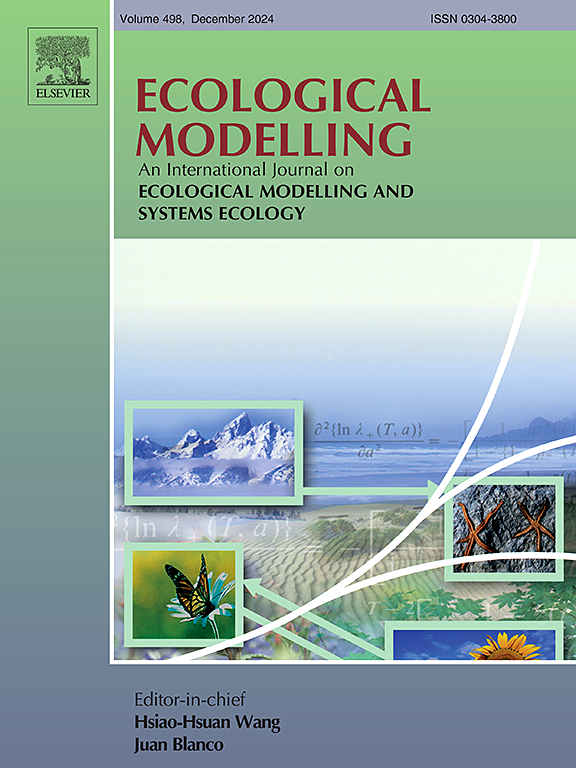Supporting conservation planning in a national biodiversity hotspot – Projecting species composition across a groundwater level gradient using a demographic forest model
IF 2.6
3区 环境科学与生态学
Q2 ECOLOGY
引用次数: 0
Abstract
The Leipzig floodplain forest is a biodiversity hotspot of national significance. However, it is an urban forest heavily impacted by human activities, including the alteration of the hydrological regime preventing floods and leading to a lower groundwater level. In parts of the Leipzig Floodplain Forest, the restoration of a near-natural hydrological regime with regular floods and a raise of the groundwater level is considered. However, it is unclear whether raising the groundwater level in particular would ensure the long-term conservation of typical floodplain tree species such as European ash (Fraxinus excelsior) and pedunculate oak (Quercus robur), which are considered key species for biodiversity conservation. To investigate this question, we quantified the relationships between groundwater table distance and the growth, mortality, and recruitment rates for eight common tree species in the Leipzig Floodplain Forest using forest inventory data from 60 plots and a spatial groundwater model. Based on these relationships, we simulated the long-term dynamics of species composition with and without a raise of the groundwater table using the Perfect Plasticity Approximation (PPA) forest model.
Under current groundwater conditions, the model projected a substantial decline of the typical floodplain species ash and oak over 100 years. Field maple (A. campestre) and hornbeam (Carpinus betulus) benefited from this decline, as did the less flood-tolerant Norway maple (A. platanoides) on dry sites. When a raise of the groundwater level was simulated, ash and oak continued to decline. However, A. platanoides, which is not a typical floodplain forest species, was projected to be inhibited by a raise of the groundwater level. These results suggest that a raise of the groundwater table alone does not lead to the conservation of ash and oak, and hence the rich biodiversity associated with them. The study illustrates how ecological modeling can support the evaluation of biodiversity conservation strategies and provide the scientific basis for the successful transformation of this unique ecosystem towards a self-sustained biodiversity-rich urban forest.
求助全文
约1分钟内获得全文
求助全文
来源期刊

Ecological Modelling
环境科学-生态学
CiteScore
5.60
自引率
6.50%
发文量
259
审稿时长
69 days
期刊介绍:
The journal is concerned with the use of mathematical models and systems analysis for the description of ecological processes and for the sustainable management of resources. Human activity and well-being are dependent on and integrated with the functioning of ecosystems and the services they provide. We aim to understand these basic ecosystem functions using mathematical and conceptual modelling, systems analysis, thermodynamics, computer simulations, and ecological theory. This leads to a preference for process-based models embedded in theory with explicit causative agents as opposed to strictly statistical or correlative descriptions. These modelling methods can be applied to a wide spectrum of issues ranging from basic ecology to human ecology to socio-ecological systems. The journal welcomes research articles, short communications, review articles, letters to the editor, book reviews, and other communications. The journal also supports the activities of the [International Society of Ecological Modelling (ISEM)](http://www.isemna.org/).
 求助内容:
求助内容: 应助结果提醒方式:
应助结果提醒方式:


